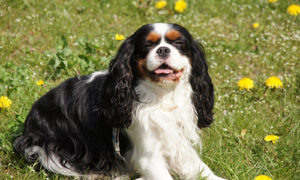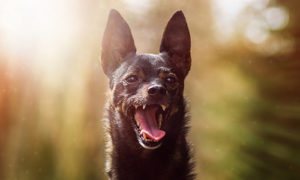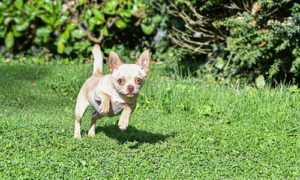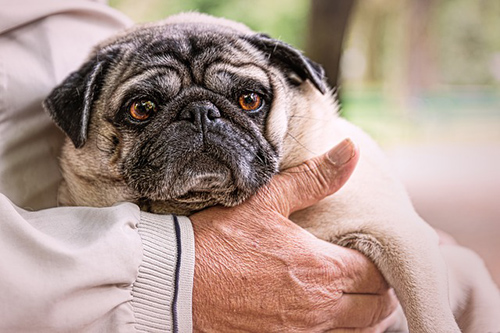
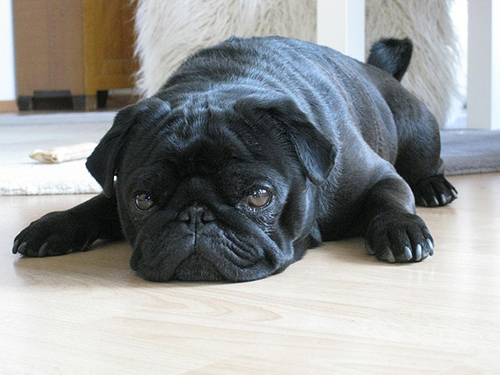
The Pug throughout history went by a variety of different names, such as the Mops in Germany, the Dutch or Chinese Pug in England, and the Mopshond in Holland. For instance, the name may have come from two sources: the Latin pugnus, meaning fist, because its head resembles a clenched fist. And second, from the marmoset “Pug,” a type of monkey that were popular pets during the eighteenth century, the Pug also somewhat resembles.
This dog is of an enigma in the Toy Group. For instance, it is the only one to have descended from the Mastiff breeds. Unfortunately, the exact ancestry is lost in history, but we can still tell its many Mastiff characteristics.
An Ancient Breed
This dog is an ancient breed, and it is one of several other miniaturized dogs from the Orients, where it was a staple in Buddhist monasteries in Tibet centuries ago. The wrinkles on its face were an important feature in China. Most notably, the vertical wrinkles on the forehead resemble the Chinese character for “prince.”
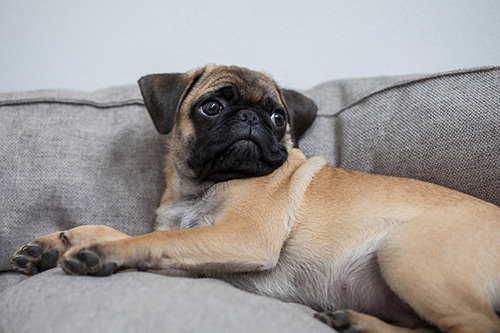
The Pug was most likely introduced to Holland through the Dutch East India Trading Company. They became popular in no time and became the official dog of the House of Orange. Actually, it is said that a Pug saved the life of Prince William by alerting him to Spanish soldiers in 1572. By the year 1790, these dogs were popular in France. In fact, it is said that Napoleon’s wife used her Pug to transport messages to her husband during his imprisonment.
These dogs found their way to England during Victorian times and became the top breed. Therefore, replacing the King Charles Spaniel as the breed of the wealthy and the royal dog. During Victorian times, crop ears on the Pug were the norm, which further stressed their wrinkled faces. In the year 1886, several of these dogs got to England from China. Later, the breed joined the AKC, and It has since remained a popular breed as both a pet and a show dog.
Pug Breed Facts
Temperament: These dogs are a combination of comedy and dignity. They’re playful, confident, and an amiable companion. They can be stubborn and headstrong. However, they’re pleasant and are very willing to please. They love to romp and show off.
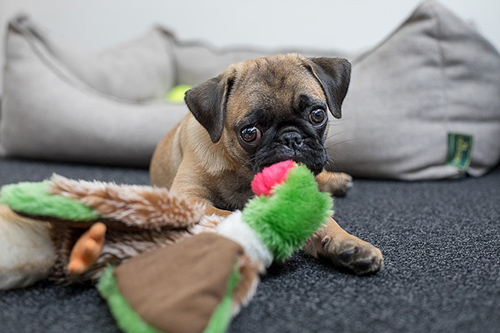
Upkeep: This dog needs exercise daily, which can be in the form of a lively game or a moderate walk on a leash. It does not tolerate heat and humidity well. Its coat needs minimal care. However, facial wrinkles will need cleaning daily. We recommend a daily brushing to remove dirt from its smooth coat. Keep facial wrinkles clean and dry to prevent skin infections. This dog is notorious for wheezing and snoring.
- POPULARITY: Popular
- FAMILY: Mastiff, Bull
- ORIGIN: China
- DATE OF ORIGIN: Ancient times
- PAST FUNCTION: Lapdog
- CURRENT FUNCTION: Companion
- OTHER NAMES: Mops, Carlin
- LIFE EXPECTANCY: 12 – 15 years
- WEIGHT: 14–18 pounds
- HEIGHT: 10 -11 inches
Color: These dogs come in apricot-fawn, silver, black, with a black muzzle or mask, cheek, moles, ears, and trace down back
Group: They recognize This breed as a member of the AKC and UK Toy Group
Health Problems
Health concerns about this breed include brachycephalic syndrome, CHD, Pug dog encephalitis, elongated palate, patellar luxation, hemivertebra, stenotic nares, Legg-Perthes, entropion, KCS, and skin infections. This dog is also susceptible to seizures, nerve degeneration, demodicosis, allergies, and distichiasis. Also, this dog does not tolerate heat well and can be sensitive to anesthesia. They’re also prone to corneal abrasion and obesity.
Pug Characteristics
The Pug is square-proportioned, compact, and possesses a cobby built. It is a large dog in a little body. They have a jaunty gait, which is strong and with a slight roll of the hind legs. The distinguishing look is soft and attentive. The Pug’s forehead has large, deep wrinkles. Their coat is fine, smooth, and short.


